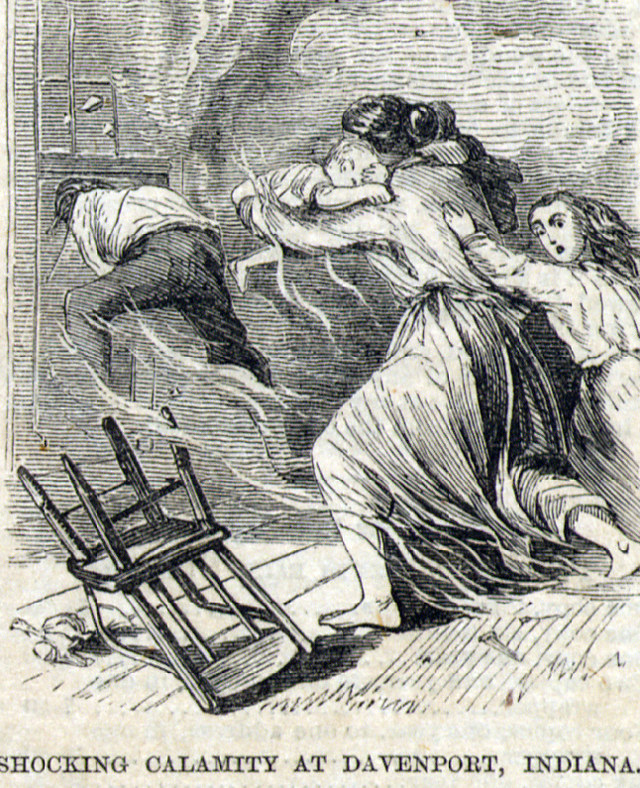Throughout human history fire has been both a savior and a destroyer. In the Victorian era, it played the part of both spectacularly.

In the mid-1800s, for much of the western world the crinoline was a mainstay for women.

At that time, crinolines and dress widths were very wide, and of course some wise-ass men had a lot to say about it. This caricature depicts a woman's oversized crinoline preventing her from even coming in contact with those around her.
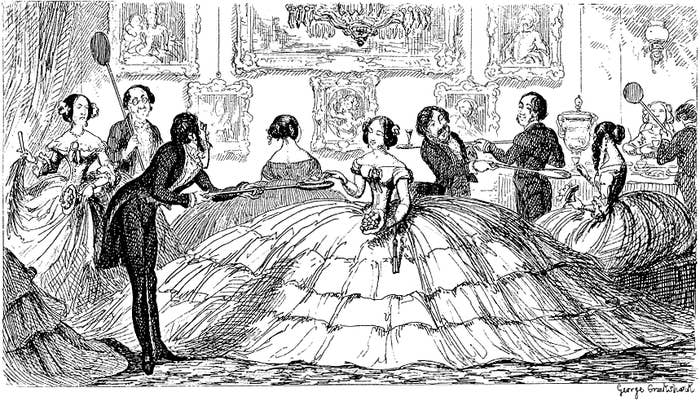
And this one depicts women's huge crinolines crushing men at a ball...
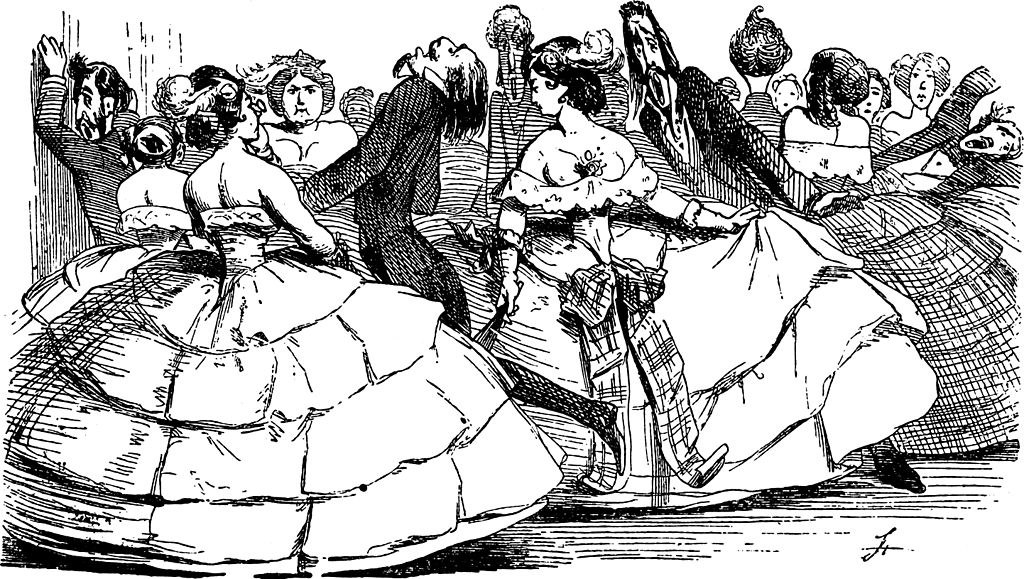
...while this one shows a woman sheltering her children from the rain with her crinoline.
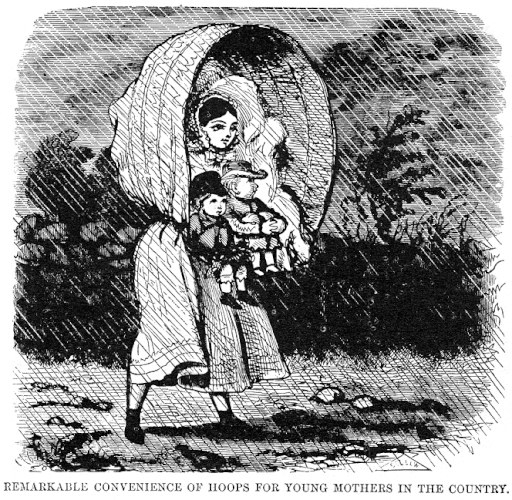
But alongside these ridiculous claims lay real danger, because a crinoline could become a death trap if its owner wandered too close to fire.
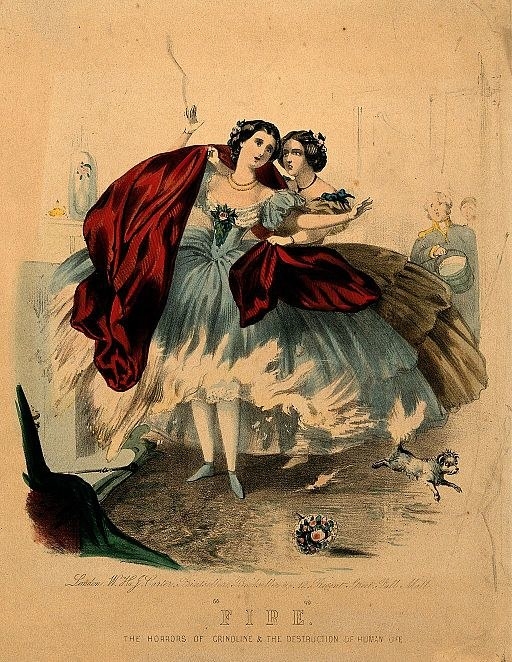
The combination of air trapped under the hoop and copious fabric covering it could easily seal a woman's fate.
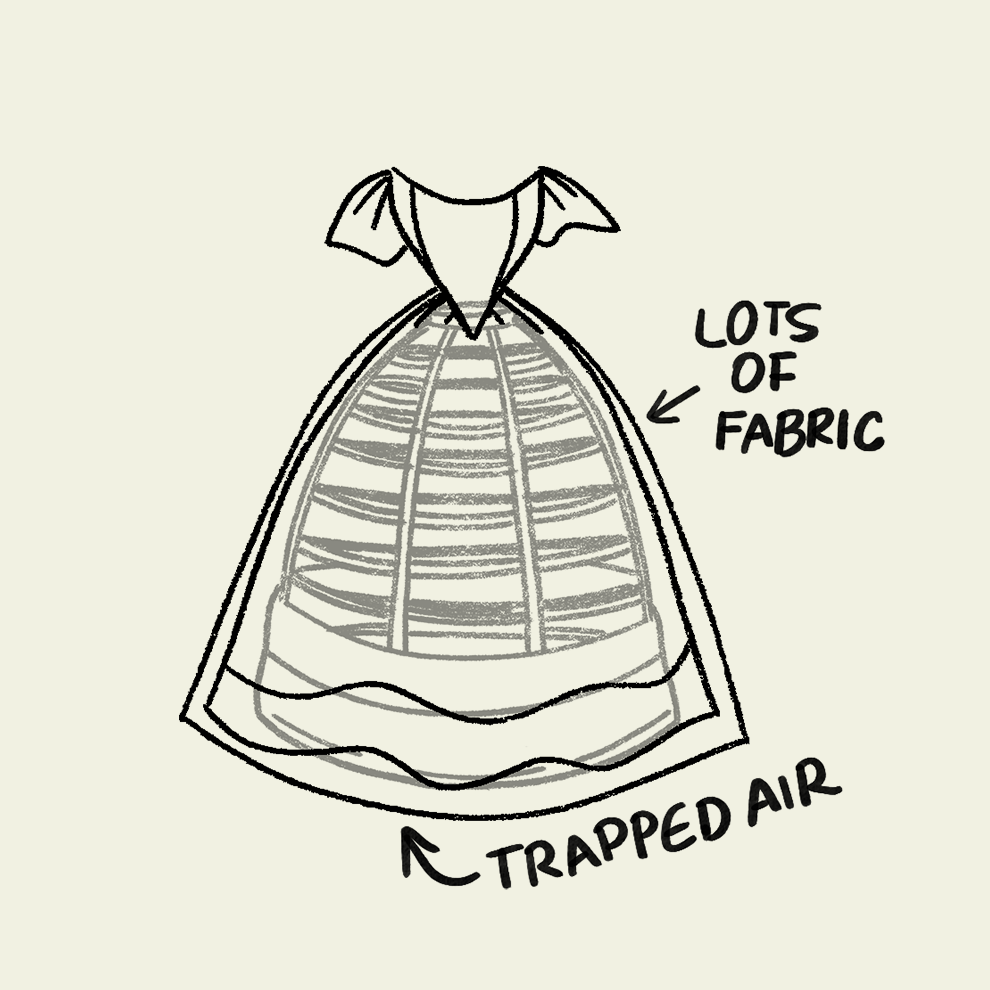
But when it came to flammable fashion, it got even more disturbing. Throughout the 19th century, it wasn’t uncommon for ballerinas to literally catch fire while performing.
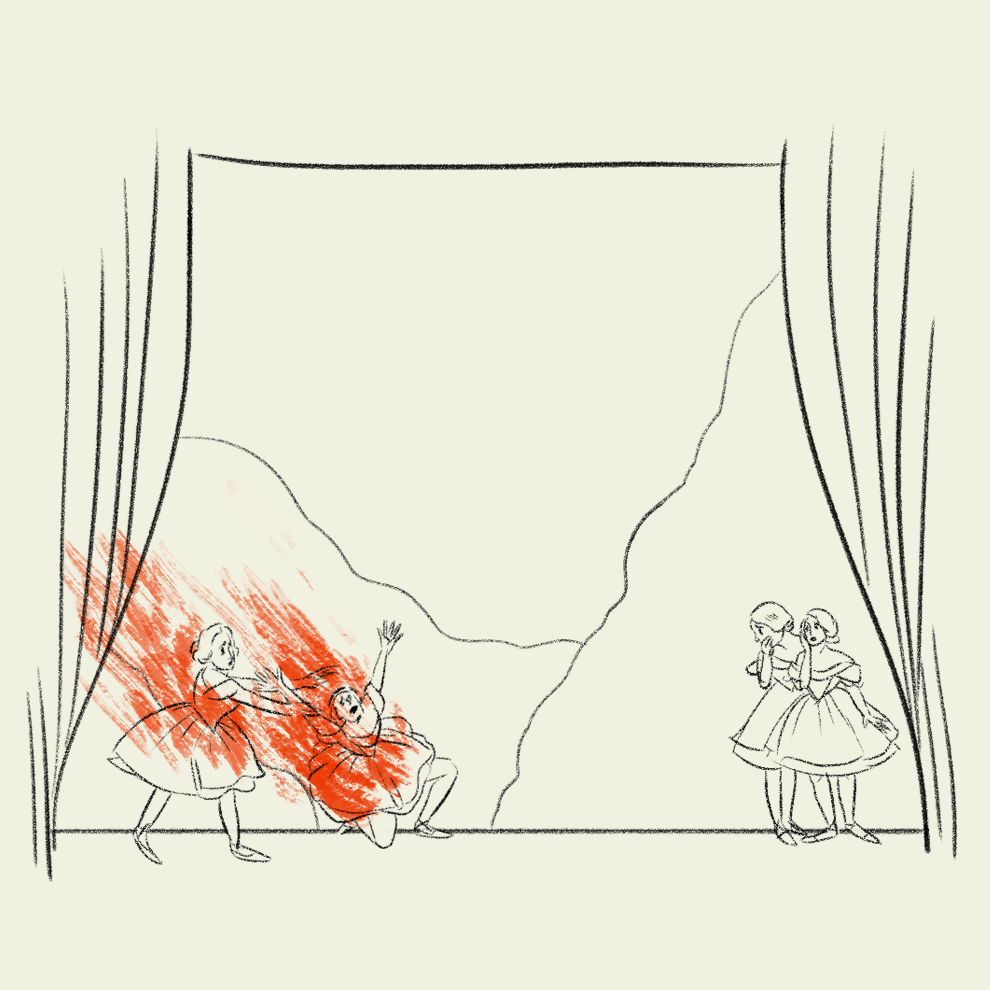
Dancers’ costumes were layered with airy fabrics that could burn in an instant.
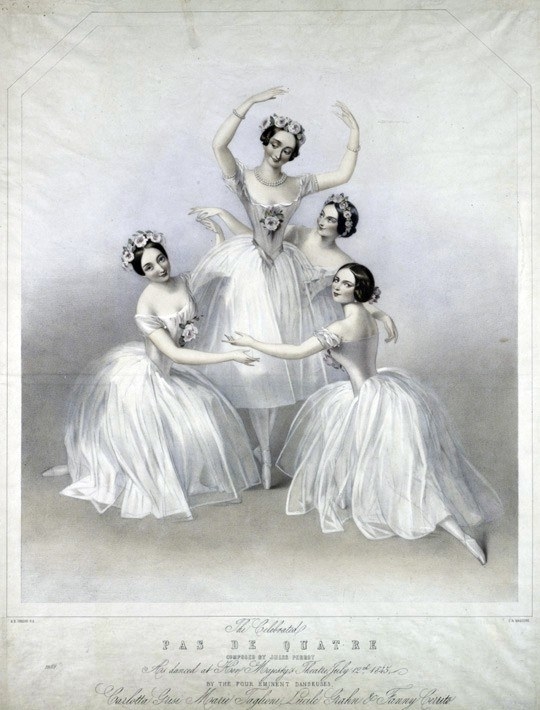
And gas lights in theaters were placed to showcase ballerinas’ legs.

The result: open flames way too close to very combustible material!
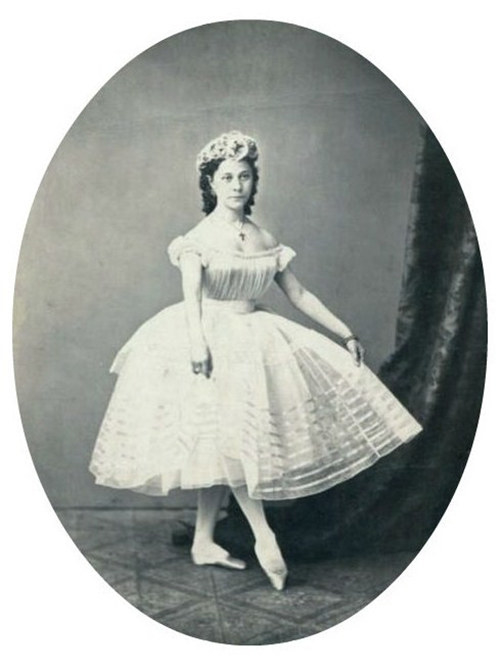
In 1862, famous ballerina Emma Livry burned alive when her skirt grazed one such gas lamp.
She suffered horrendous burns; some of her costume fused with her body. She lived another eight agonizing months before dying at 21.
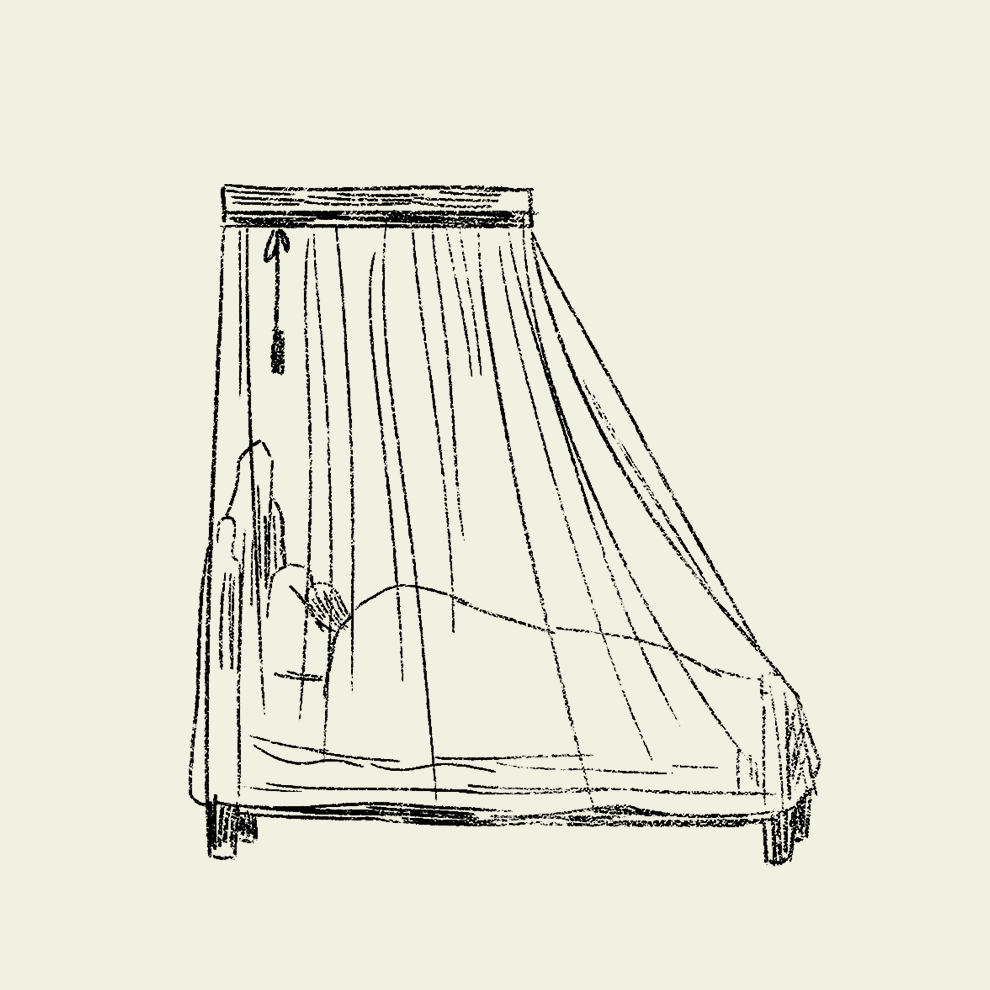
Death-by-fire cases involving ballerinas were very common in the 1800s, from singular dancers to entire troupes becoming engulfed at once.
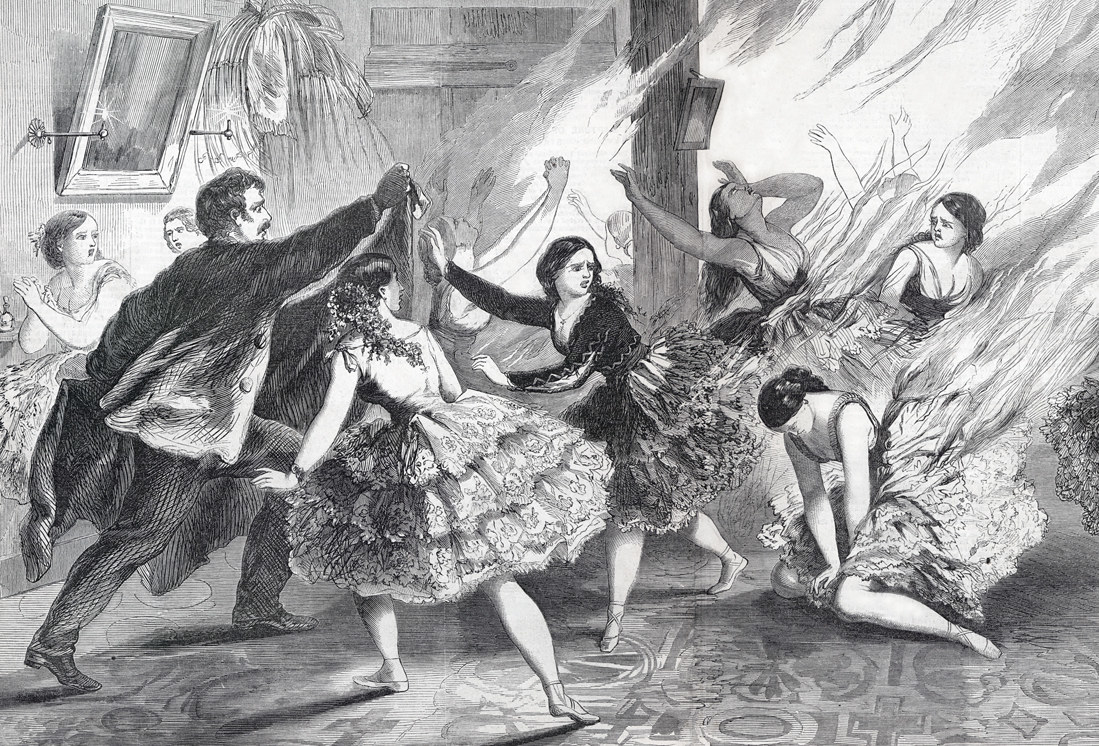
Towards the end of the 1800s, silhouettes became more compact. Thus, crinolines were slimmer, reducing the risk of catching fire.
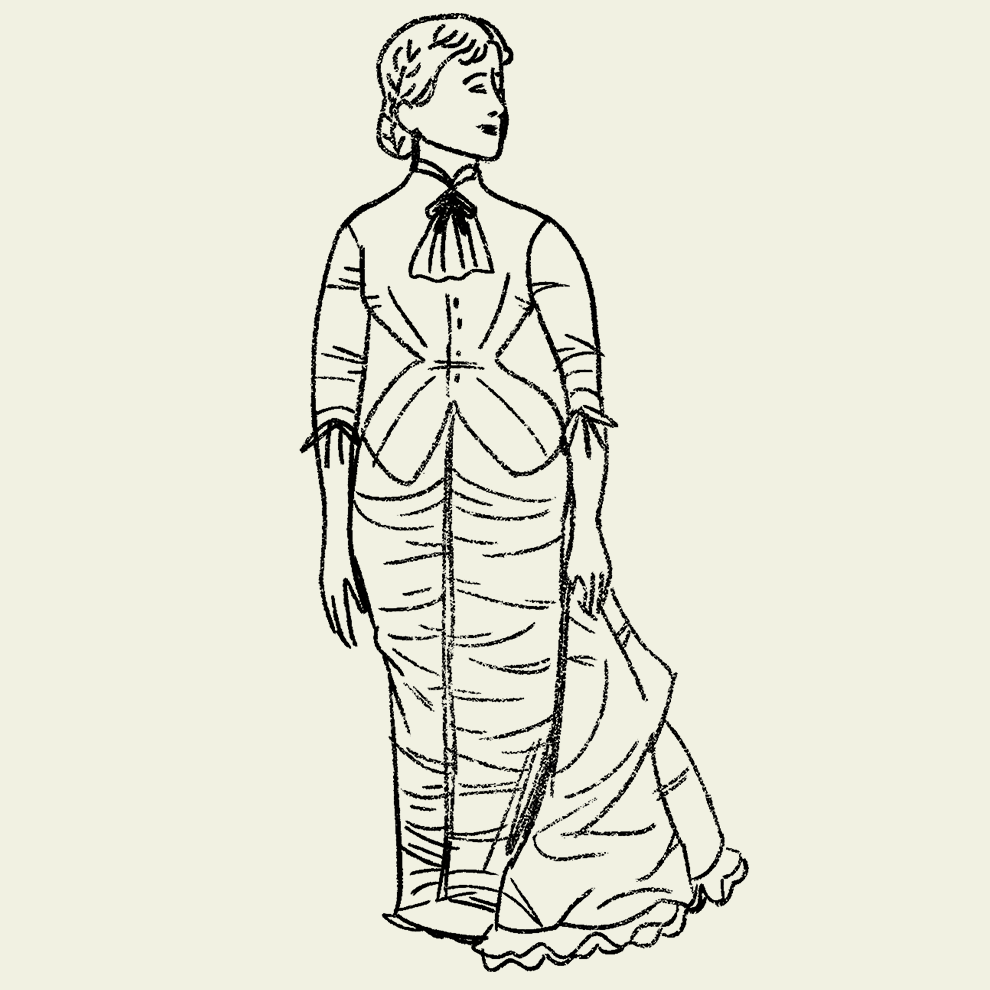
But easily combustible fabrics continued to be produced throughout the century. One of these was Flannelette.
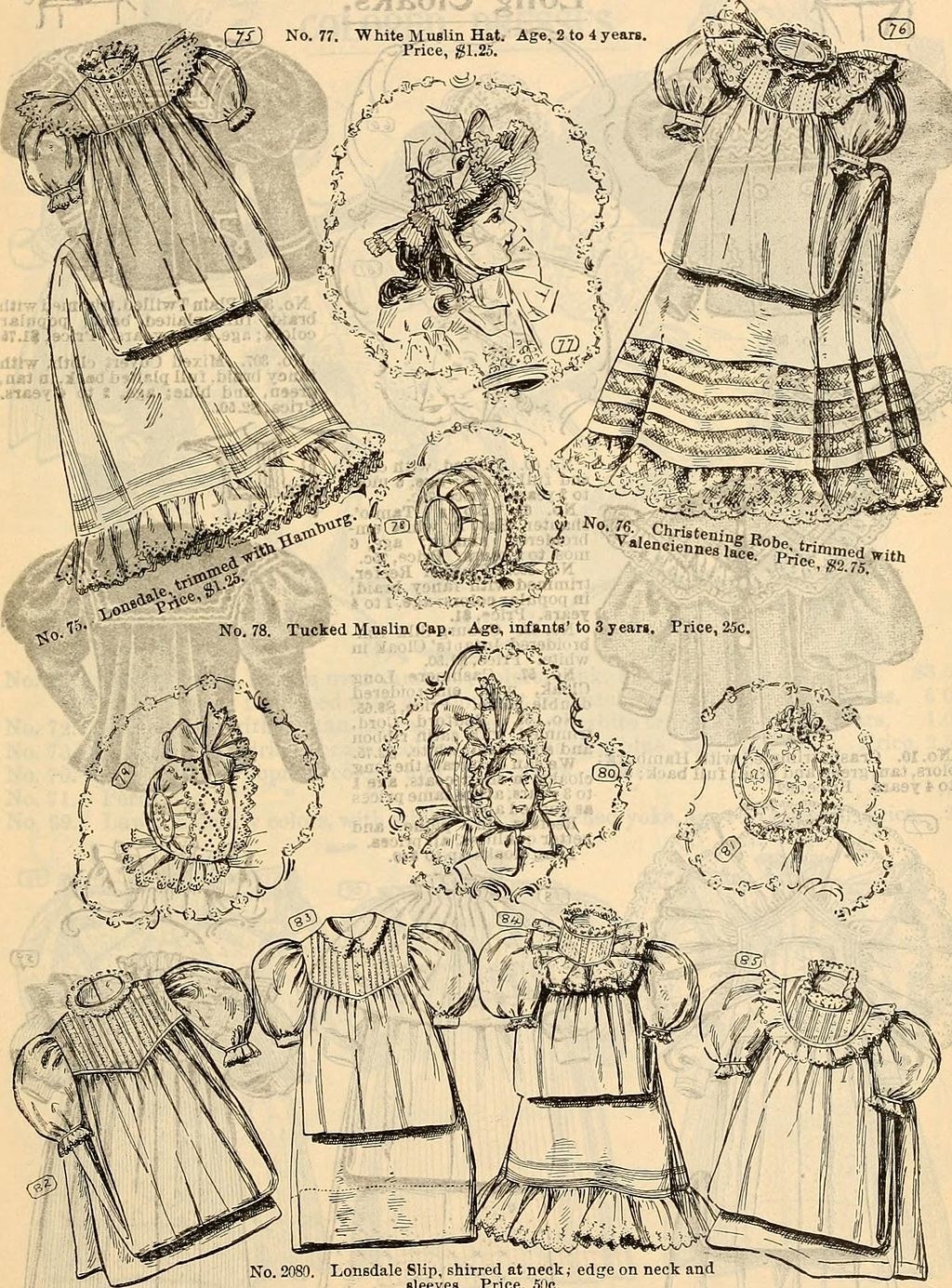
Though cheaper to produce and buy than flannel, Flannelette was so deadly that something had to be done. In 1910, a chemist named William Henry Perkin developed "Dr. Perkin's Non-Flam," which essentially flameproofed the textile.
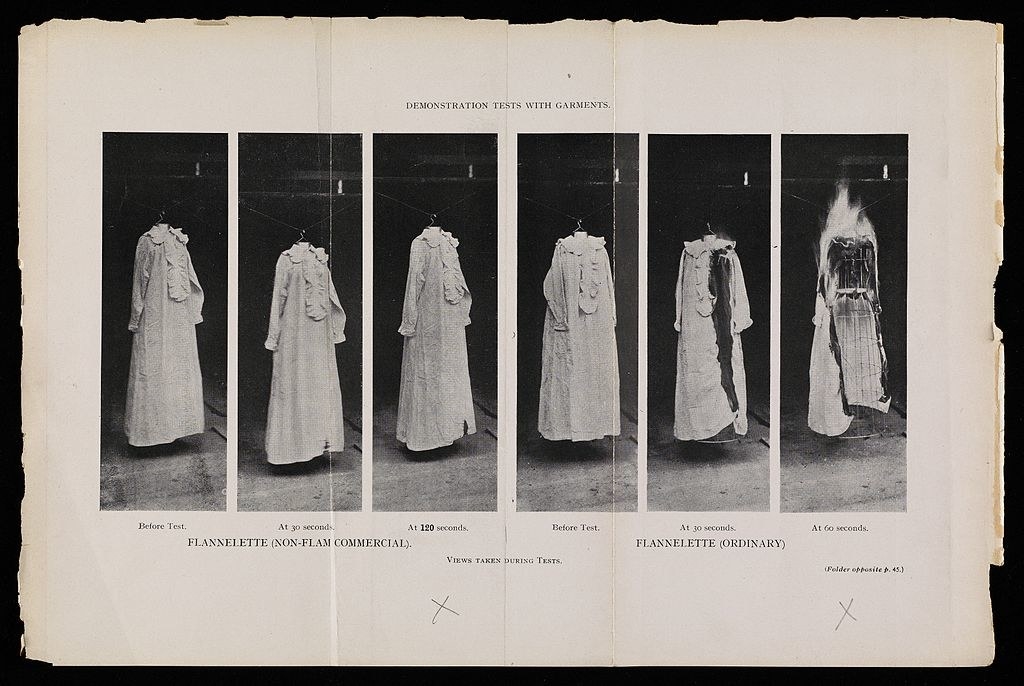
In 1953, the U.S. Flammable Fabric Act was passed to ensure the manufacture of safer clothes. Similar laws have been passed around the world.
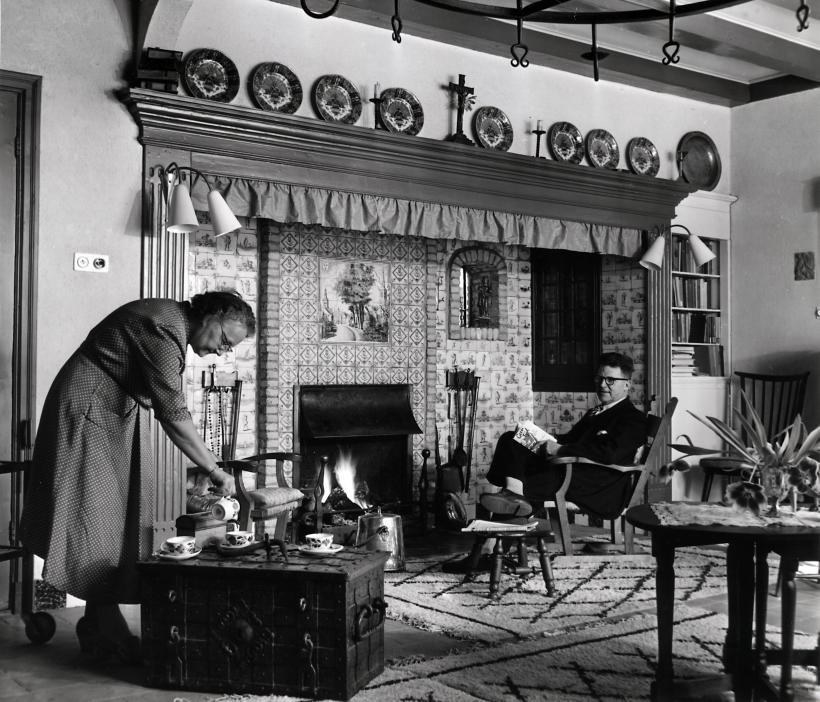
Fortunately, today, most people don’t spend their days worrying about their clothes burning them alive.
